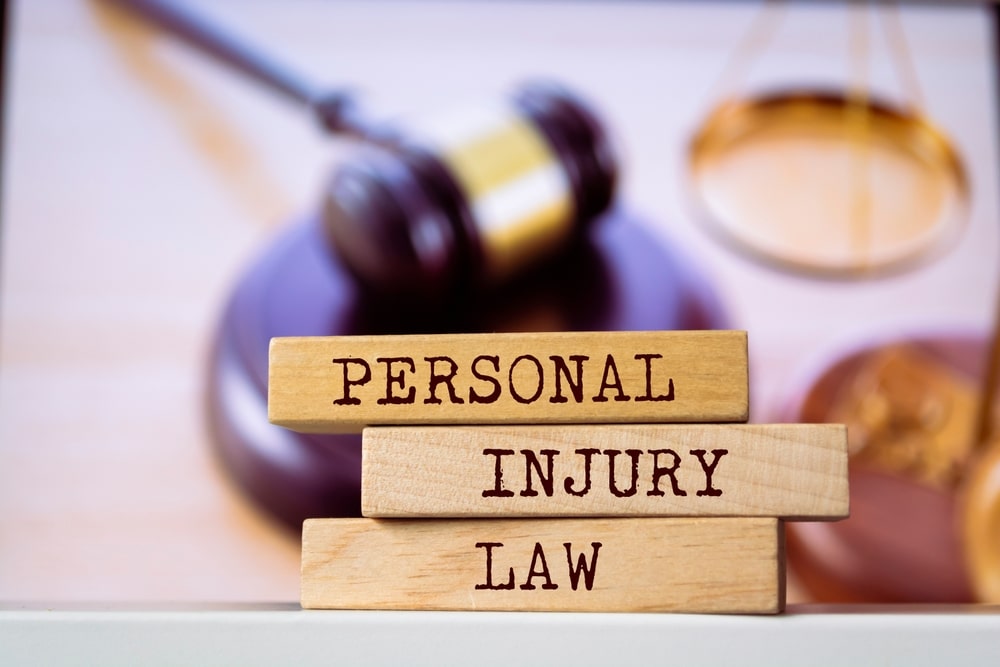January 15, 2024
What Are Personal Injury Damages Awarded in Tennessee? Understanding Compensation Types
Personal injury damages are monetary compensations awarded to individuals who have suffered harm due to the wrongful conduct of another party. Under personal injury law, these damages are intended to restore the injured person to the position they would have been in if the injury had not occurred. The rationale behind awarding damages is not just about providing relief for the physical injury itself, but also for the financial, emotional, and lifestyle impacts that the injury has caused.
The calculation and award of personal injury damages can be complex, as it often requires consideration of both tangible losses, such as medical expenses and lost wages, and intangible losses, like pain and suffering, emotional distress, and loss of enjoyment of life. Different types of personal injury claims, such as car accidents or slip and fall incidents, may result in different types of damages being awarded.
Damages in personal injury cases are generally categorized as compensatory or punitive. Compensatory damages are intended to compensate the injured party for their losses, and can be further split into economic and noneconomic damages. Punitive damages, much less commonly awarded, serve to punish the at-fault party for particularly egregious or intentional wrongdoing and are intended to deter similar conduct in the future.

Types of Personal Injury Damages
When a person suffers harm due to someone else’s negligence, the law provides mechanisms to compensate the victim through personal injury damages. These remedies monetarily value the losses the victim has incurred. Personal injury damages are broadly categorized into economic, non-economic, and punitive damages.
Economic Damages
Economic damages are quantifiable financial losses resulting from the injury. These typically cover:
- Medical expenses: Immediate and ongoing medical treatment costs.
- Lost wages: Income lost due to the inability to work while recovering.
- Property damage: Costs to repair or replace damaged possessions.
The goal is to make the injured party whole, financially speaking, as if the injury had not occurred. Therefore, they may include any out-of-pocket expenses linked to the injury.
Non-Economic Damages
In contrast, non-economic damages offer compensation for intangible losses, which are not easily calculated in monetary terms. These damages may include:
- Pain and suffering: The physical discomfort and emotional impact of the injuries.
- Emotional distress: Psychological effects, such as anxiety, depression, and trauma.
- Loss of enjoyment of life: The decreased quality of life due to the injury’s long-term consequences.
- Loss of consortium: Impact on the injured person’s relationship with their spouse.
Despite their non-tangible nature, non-economic damages play a critical role in acknowledging the full spectrum of harm a victim suffers.
Punitive Damages
Finally, punitive damages serve a different purpose than compensatory damages. They are not aimed at compensating the victim but rather at punishing the wrongdoer and deterring similar conduct in the future. They typically apply in cases where the defendant’s actions were particularly egregious or reckless. Punitive damages are less common and not tied to the specific losses suffered by the injured party.
Calculating Damages in a Personal Injury Case in Tennessee
When a personal injury lawsuit is brought before a court, the damages that may be awarded to the injured party are often calculated based on a variety of factors, seeking to fairly compensate for the losses incurred.
Role of the Jury
The jury plays a crucial role in personal injury cases, as they are responsible for evaluating evidence and determining the amount of compensation, or damages, that the defendant should pay the plaintiff. These damages are typically classified into two types: compensatory and general damages. Compensatory damages, also known as special damages, encompass specific losses such as medical bills, lost wages, and property damage. In contrast, general damages cover non-economic losses like pain and suffering or emotional distress.
Factors Influencing Damages Award
A myriad of factors influence the damages awarded in a personal injury case. These include:
- The extent and severity of the injuries.
- The impact of the injuries on the plaintiff’s quality of life and ability to work.
- Documented evidence of expenses resulting from the injury.
- The presence of insurance coverage and policy limits.
- The defendant’s wealth and net worth, which may affect punitive damages awarded beyond compensatory and general damages.
It is essential to understand that each personal injury case is unique, and the awarded damages will reflect the specific circumstances surrounding the incident and the injury.
Challenges and Limitations in Awarding Damages
Determining personal injury damages presents various challenges including legislative caps and the difficulty of quantifying intangible losses. These factors may limit compensation and often require intricate legal navigation.
Caps on Damages
States may impose legislative caps on the amount of compensation one can receive for personal injury claims. These caps serve as part of tort reform efforts intended to control insurance costs and prevent excessive punitive damage awards. For example, some states have statutory limitations that directly limit punitive damages to a certain multiple of compensatory damages or a fixed dollar amount. This control means that even in cases of gross misconduct, a plaintiff’s compensation for punitive damages will not exceed the predetermined state maximum.
Proving Intangible Losses
Intangible losses, such as loss of enjoyment, lost companionship, and disfigurement, are inherently challenging to quantify. When dealing with wrongful death damages, the quantification of lost companionship and emotional hardship adds another layer of complexity to damage determinations. Jurors must consider these non-economic factors to assign a monetary value based on subjective judgment. Personal injury laws do provide some guidance on how to approach these calculations, but the abstract nature of these losses can still pose a significant challenge within the confines of a statute of limitations.

Legal Process and Resolution
In the realm of personal injury law, the journey from injury to compensation is a structured legal process involving strategic decisions made by the plaintiff and his or her attorney, negotiations with defendants, and potentially, the insurance company. This path can lead to a settlement or a court trial, each with its own complexities.
Filing a Personal Injury Lawsuit
When an individual is injured due to negligence or malicious intent, such as in a Nashville car accident or due to a hazardous condition on someone’s property, they may consult with an attorney to file a personal injury claim in Nashville. This legal action represents the formal assertion of the plaintiff’s allegations against the responsible party or entity. The complaint must detail the incident, the basis for the claim—including any premises liability or product liability issues—and the extent of the injuries suffered. Timely filing is critical, as statutes of limitations apply and can bar recovery if a lawsuit is not initiated within the prescribed period.
Settlements and Trials
Settlements: The majority of personal injury claims are resolved through settlements negotiated out of court. These agreements are financially assessed by both parties based on the severity and impact of the injury, the clarity of liability, and other factors such as insurance coverage limits. An insurance claim often precedes a settlement agreement, and negotiations may continue until the parties reach a satisfactory compromise, avoiding the unpredictability of a trial.
Trials: If settlement talks do not yield an acceptable outcome, the case may proceed to trial. The courtroom process is comprehensive, involving the presentation of evidence, witness testimonies, and legal arguments. The attorney’s role is pivotal in establishing the defendant’s negligence or other breach of duty, and in demonstrating the plaintiff’s need for a court award to cover damages like medical expenses, lost wages, and pain and suffering. Trials can be lengthy, and the outcome rests in the hands of a judge or jury, who assess whether the defendant’s actions were reckless, fraudulent, or otherwise liable for the plaintiff’s injuries.




